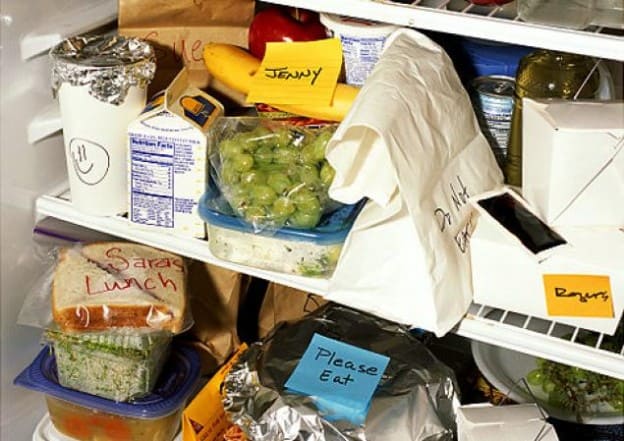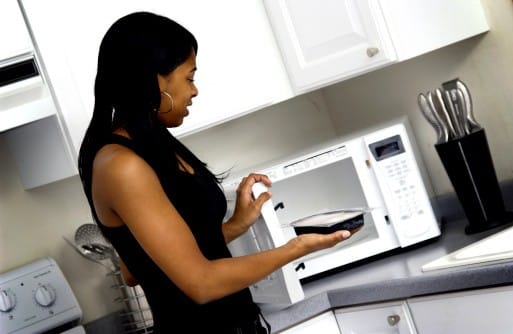There is nothing more exciting than purchasing a new school lunch bag for the year!
Whether it’s off to school or work we go, millions of Americans carry “bag” lunches. Food brought from home can be kept safe if it is first handled and cooked safely. (Check out tips for safely cooking at BBQ’s & Tailgates too!) Then, perishable food must be kept cold while commuting via bus, bicycle, on foot, in a car, and on to the lunch table. After arriving at school or work, perishable food must be kept cold until lunchtime.
Why keep food cold? Harmful bacteria multiply rapidly in the “danger zone” — the temperatures between 40 and 140 degrees F. So, perishable food transported without an ice source won’t stay safe long. Here are safe handling recommendations to prevent food-borne illness from “bag” lunches.
Begin with Safe Food
Perishable food, such as raw or cooked meat and poultry, must be kept cold or frozen at the store and at home. Eggs should be purchased cold at the store and kept cold at home. In between, transport perishable food as fast as possible when no ice source is available. At the destination, it must be kept cold. Food should not be left out at room temperature more than 2 hours (1 hour if the temperature is above 90 degrees F).
Prepackaged combos, you know the ones, that are popular with your kids that contain luncheon meats along with crackers, cheese, and condiments must also be kept refrigerated. This includes lunch meats and smoked ham which are cured or contain preservatives.
Keep Everything Clean
Wash your hands before you prepare or eat food. Wash cutting boards, dishes, utensils, and counter-tops with hot, soapy water after preparing each food item and before you go on to the next item. A solution of 1 teaspoon of bleach in 1 quart of water may be used to sanitize surfaces and utensils. Keep family pets away from kitchen counters.
Cross-Contamination (Know what that means!)
Harmful bacteria can spread throughout the kitchen and get onto cutting boards, utensils, and counter-tops. Always use a clean cutting board. When using a cutting board for food that will not be cooked, such as bread, lettuce, and tomatoes, be sure to wash the board after using it to cut raw meat and poultry. Use one cutting board for fresh produce and a separate one for meat and poultry. That is a must!
At lunchtime, discard all used food packaging and paper bags. Do not reuse packaging because it could contaminate other food and cause food-borne illness.
Now for the Packing
Pack just the amount of perishable food that can be eaten at lunch, that way, there won’t be a problem with storage or safety of leftovers.
It’s fine to prepare the food the night before and store the packed lunch in the refrigerator. Freezing sandwiches helps them stay cold. However, for best quality, don’t freeze sandwiches containing mayonnaise, lettuce, or tomatoes. Add these later.
Insulated, soft-sided lunch boxes or bags are best for keeping food cold, but metal or plastic lunch boxes and paper bags are fine as well. If using paper lunch bags, create layers by double bagging to help insulate the food. An ice source should be packed with perishable food in any type of lunch bag or box.
Keeping Cold Lunches Cold
Prepare cooked food, such as turkey, ham, chicken, and vegetable or pasta salads, ahead of time to allow for thorough chilling in the refrigerator. Divide large amounts of food into shallow containers for fast chilling and easier use. Keep cooked food refrigerated until it’s time to leave home.
To keep lunches cold away from home, include a small frozen gel pack or frozen juice box. These work very well! Of course, if there’s a refrigerator available, store perishable items there upon arrival. Some food is safe without a cold source. Items that don’t require refrigeration include fruits, vegetables, hard cheese, canned meat and fish, chips, breads, crackers, peanut butter, jelly, mustard, and pickles.
Keeping Hot Lunches Hot
Use an insulated container to keep food like soup, chili, and stew hot. Fill the container with boiling water, let stand for a few minutes, empty, and then put in the piping hot food. Keep the insulated container closed until lunchtime to keep the food hot- 140 degrees F or above. Few people use these containers anymore, but they work very well and can be a good addition to a lunch meal.
Microwave Cooking / Reheating
When using the microwave oven to reheat lunches, cover food to hold in moisture and promote safe, even heating. Reheat leftovers to at least 165 degrees F. What does that look like? Food should be steaming hot. Cook frozen convenience meals according to package instructions.
Lunch at school or work needs to be a pleasant experience for your child and family members. If hot lunch is available, that is a good solution too. The primary goal for preparing lunches is to make sure that good choices are made for foods that children and adults need at that time of day, and that they are of the highest quality to withstand transportation and storage. Sometimes we can get carried away with bright packages and trendy new food products. Taking the time to provide the best foods possible from a variety of food groups and packaged safely should be the primary goal in good, safe school lunches.
What are your go-to meals for bagged lunches? Do you brown bag it, have a fancy insulated soft-sided bag, or rock a retro metal/plastic lunch box? Tell us in the comments!
Looking for more nutrition advice on healthy (and safe) daily lunches for work or school? Not sure where to start? Let us help get you on track with a healthy diet plan!
By Rita Larsen, RD, CD, Elite Sports Clubs Dietitian and Nutrition Counselor



